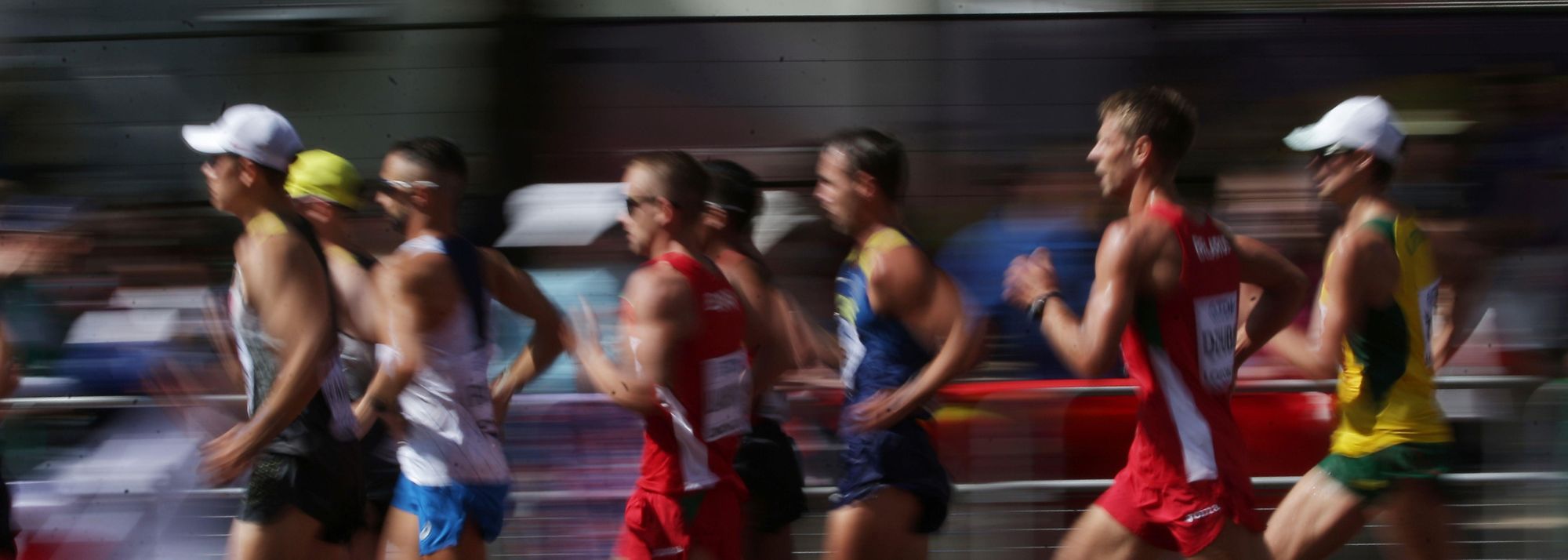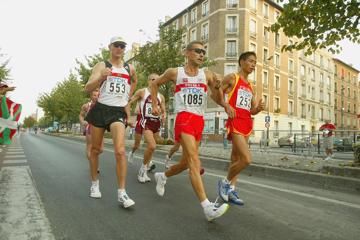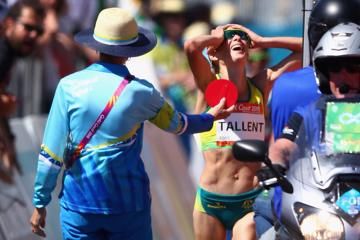Athletes compete in the men's 20km race walk at the IAAF World Championship London 2017 (© AFP/Getty Images)
In the latest of our ‘Way of the Walk’ series we chat to race walking legends Jefferson Perez, Robert Korzeniowski and Jane Saville on the importance of nutrition.
How important is nutritional intake as a race walker?
Jefferson Perez: A huge part of my life as a race walker was making sure my nutrition was right. I spent a lot of money on ensuring I ate quality food. It was very important for me to get the right nutritional combinations for my body. My nutrition would change depending on whether I was training at sea level, where I would eat more fat, or at altitude where I might take on more protein or carbs. My nutrition would also differ depending on whether I trained in cold or hot conditions.
Robert Korzeniowski: It is vital. The stomach and digestion is no less important than legs and arms in race walking. When competing in the 20km our nutrition is based around drinks and hydration. However, for (race walking) distances such as the 50km, and dependent on the temperature, nutrition may mean solid food and also isotonic and hypertonic drinks. Back in the 1980s, before the explosion of the supplement market I would take on board dried fruit and tea.
Why does nutrition change in different temperatures?
RK: In hot and humid conditions, a racewalker needs more water and less mineral concentration as part of their nutrition. I know this through the experience of competing in 30c at the 1991 IAAF World Championships in Tokyo. I felt when I took on board the isotonic drinks I had a full stomach of liquid and I was not capable of sweating. This is less the case at a lower temperature, where I would opt for a higher concentration of solution, which often comes in the form of a semi-liquid gel.
What is your nutritional strategy in the days leading up to a race?
JP: Providing an athlete has made a comprehensive nutritional plan for their entire preparation, the final days before the competition are not so important. If an athlete has not fulfilled their nutritional plan in the previous weeks, I would say, do not pretend to correct it in the final few days before the race.
Jane Saville: In the few days before a race I would increase my carb intake and reduce protein. In this period, I would often steer away from pasta and stick to eating rice. I would also avoid sauces and eat plain food in the hope that I would not get any stomach issues.
RK: I would increase carbohydrates and reduce proteins, except for the easily digested proteins. I would also not take on board any fresh vegetables, fruit or whole cereals. From a nutritional perspective, it might be seen as adopting unhealthy food but it was very safe food, which would help avoid any potential stomach problems before a race.
At what particular point on the course would you take on board your nutrition during a race?
RK: I would adopt the same rule for eating and drinking as I typically would – eat before feeling hungry and drink before feeling thirsty. I would often take on first drink at around 15km. My first solid food would be around 1:15-1:20 of race walking (in a 50km race).
What is the best piece of nutritional advice you could offer to a race walker?
JS: Be smart about what you are eating. Enjoy a balanced diet and always be aware of what you are consuming. Post-race recovery has also become much more important than it was 20 years ago, so make sure you take on board the right nutrition to aid recovery as soon as possible after a training session.
RK: Try many different nutritional strategies during training. Not all products are good for everyone but try testing them first during the training environment to find out what works best for you.
Steve Landells for the IAAF








